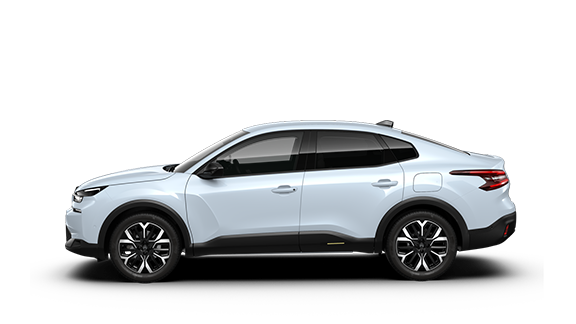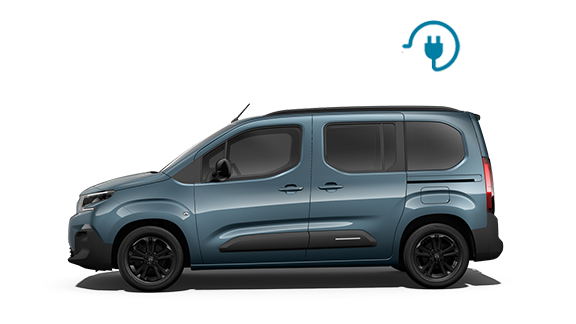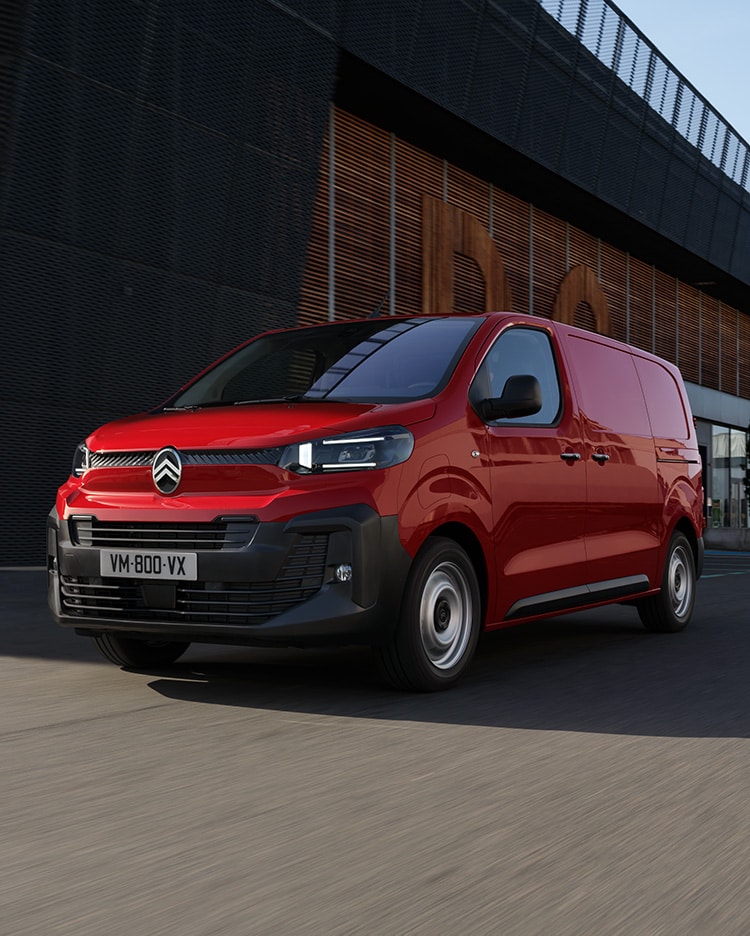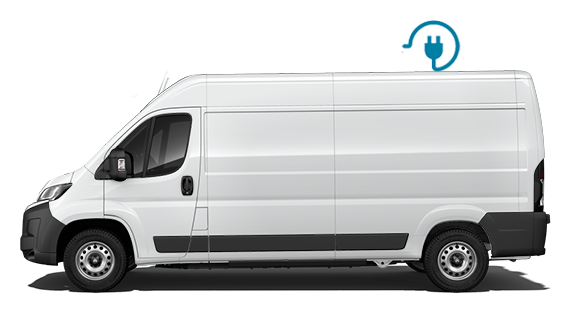
CITROËN'S GUIDE TO EV CHARGING
What is EV charging?
EV charging is an essential part of owning and maintaining an electric vehicle. Instead of being fuelled by petrol or diesel, an EV runs on a battery which needs to be recharged with electricity in order for the vehicle to keep running.
How do i charge my EV?
Electric van charging
The method of charging all Citroën electric vehicles is the same – from the small Citroën Ami right up to the large e-Relay van. Like our passenger cars, Citroën electric vans come with a compatible charging cable, depending on the model you’ve opted for.
These cables are compatible with many public and at-home chargers. For example, a higher-capacity 22kW wall box will fully charge your ë-Relay in five-nine hours, depending on the model spec, while a 7kW wall box will manage 100% in six-12 hours. Public rapid chargers drop that significantly, however, with a 100kW taking the ë-Berlingo Van from 0-80% in only half an hour.
The difference in charging an all-electric or hybrid EV
Whether you’re charging an all-electric vehicle like the Citroën ë-C4 or a hybrid, such as the New C5 X Plug-in Hybrid, the method of charging remains the same – by connecting the vehicle to a public or at-home EV charger via a compatible cable from the charging port.
The only difference between full EVs and hybrids is the battery capacity, and thus charging times. While all-electric models require enough power for hundreds of miles per charge, hybrids only require around 30 miles of electric energy each charge as they also rely on an internal combustion engine. As such, fully electric vehicles often require more time plugged in, although rapid charging can significantly reduce this.
Charging an EV in public
If you’re on the go, charging an EV at a public station will be a must. Think of it like going to fill up your tank with petrol – if you’re on a long journey or out and about and your car battery is running low, you’ll need to find a public EV charging station to ‘refuel’.
How do I charge an EV on public networks?
EV public networks are electricity suppliers with their own networks dedicated to EV charging. You’ll simply pull into one of these charging hubs, plug in your car with the chosen charge speed and wait for your car’s battery to recharge.
How much does it cost to charge an EV on public points?
The cost of charging your EV at a public charging station will vary depending on the size of the car battery in your EV, how much that particular EV network charges for electricity, and the type of charge speed you choose. Rapid charging is likely to cost more as it requires more power to recharge your car in a quicker time.
How many public EV charge points are there in the UK?
The number of EV charge points in the UK is increasing all the time. Zap-Map estimates that growth is at about 300 power points per week, and they can also tell you exactly how many are in the UK at any given time.


Charging an EV at home
For most, charging an EV at home will be the default option. It’s a convenient method that means you can leave your EV in your garage or on the drive while it recharges, rather than waiting at a charging station
How much does it cost to charge an EV at home?
Charging an EV at home will largely depend on the size of the car battery in your EV, how much you need to recharge it, and the cost of electricity in your household. EV chargers use the same electricity as any appliance in your home, so the rates agreed in your energy contract apply. This does also mean that off-peak rates apply, so if you plan to charge your EV overnight you could make savings.
What home chargers are available?
Home charging differs from public charging as it requires a charging unit specifically designed for residential use. The good news is that there are currently over 40 manufacturers available for home charging.
The units usually come with a Type 1 or Type 2 cable – these are tethered and can be plugged into the car, but some are provided with a Type 2 socket which can be used with the vehicle’s charging cable.
You can also choose between a 3kW power rating or a 7kW power rating. The 7kW is the more expensive option as it’s capable of charging the car battery much quicker.
How much do home chargers cost?
On 1st April 2022, the UK government announced an EV charge point grant. This means that for those in rented accommodation or a flat, the government will make a 75% contribution to the purchase and installation of one charging unit, capped at £350. Grants for homeowners in single-unit properties (detached, semi-detached, bungalows etc) ended on the same date.
7kW chargers are more expensive, usually at a £450-800 price point. 3kW chargers are usually priced at around £250 to £500 but charge at a much slower rate.
On-street EV charging
Not everyone has a private drive or garage in which to charge their EV. This means that on-street EV charging is a necessity for many that still want to charge close to home. The Government has provided a package of funding to local authorities to make on-street charging more accessible around the UK.
What charge point street models are available?
On-street EV chargers come in a range of different forms depending on the space and landscape available. One of the most popular types are lamppost EV chargers as they take up less space and are less costly to install. However, there are also free-standing pillar units that look much more like the EV charging points that you’d find at a network station. Pillar units are often positioned as near to the kerb as possible to prevent the cable trailing. Often they will include telescopic charging cables so they can be neatly stored when not in use.
How much will it cost to charge on the street?
On-street charging is likely to be the most expensive method of charging your EV as the costs will be tied to a subscription or tariff. It’s a similar method of payment to what you’d experience charging from home, but public network tariffs are likely to be at a higher price point.
Explore our Electric for All hub to learn more about living with an EV and the types of electric vehicles available from Citroën.
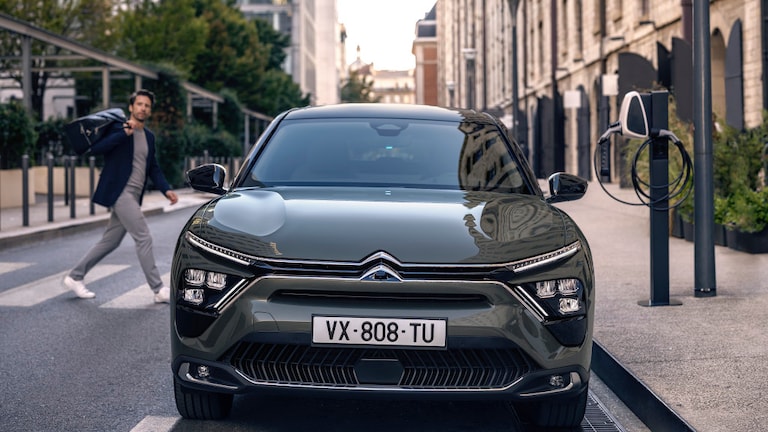
Charging an EV at work
While your car is parked all day at work, it could be recharging. With this in mind, the UK Government is offering businesses of all kinds financial support to install EV charging points.
Workplace Charging Scheme
The scheme is called the WSC (Workplace Charging Scheme) and covers up to 75% of the cost of buying and installing EV charge points on work sites, capped at £350 per socket and a maximum of 40 sockets on all sites.
What are the costs of charging your EV at work?
The rates you’ll pay to charge your EV at work will depend on the cost of electricity at the work site, plus any other charges that the workplace or electricity supplier may impose.




